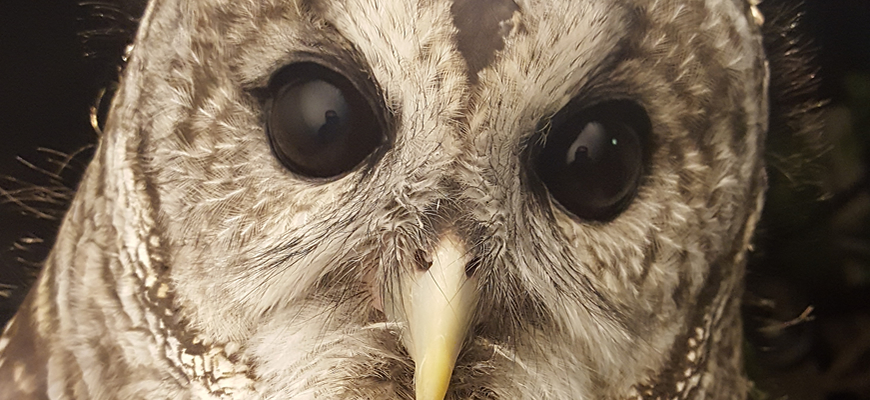
What is a Raptor
A raptor is a special type of bird which captures live prey. The word “raptor” means “to seize or grasp” in Latin. Raptors use their powerful, sharp talons to capture their prey and to defend themselves. Several bird species are considered raptors. Eagles, hawks, kites, falcons, and owls are all considered raptors. Vultures are often considered raptors as well, though they eat carrion and are more closely related to storks.
A Hunter’s Hearing and Vision
Raptors have acute hearing and vision, which is estimated to be eight to ten times that of humans. The ears of a raptor are an important tool in locating prey. Their ears are located behind their eyes on the edge of the facial disk and are concealed by feathers. They are vertically offset (one is higher and one is lower) to help locate the source of a sound more precisely. Raptors have a keen sense of vision, which helps them locate and track their prey. A raptor’s eyes are very large in relation to the size of their skull. But raptors are not able to move their eyes around like humans can. Instead they have extra bones in their neck which allow them to move their whole head around. Some raptors, like owls, can rotate their heads 270 degrees!
Lifespan and Diet
Though it’s difficult to estimate the lifespan of raptors in the wild, many birds can live up to five or six years. However, most birds do not make it past their first winter. This is usually due to predation or starvation. If a bird makes it past their first winter, then locating food becomes their biggest concern. Most raptors have varied diets, which can include: small mammals (such as mice and rabbits), reptiles (like snakes, lizards and frogs), large insects (grasshoppers and cicadas for instance) and other birds.
What Makes Owls Unique
Though owls are raptors, they have some interesting features that set them apart from other raptors. First of all, you are far more likely to see a hawk or a falcon than you are an owl. This is because owls are usually nocturnal (meaning they hunt at night), while other raptors are diurnal (meaning they hunt during the day.) Owls may seem “fluffier” than other raptors. This is because owls have special feathers that make their flight virtually silent. Owls also appear more bulky and less streamlined than most raptors. This is because they are built for short and strong bursts of flight; rather than the soaring flight of hawks or eagles. This bulky build also helps owls carry larger prey than many other raptors. Hawks can carry prey that weighs about half their weight. But owls can carry prey that weighs as much as two to three times their body weight!